MARKET INSIGHT – July 2023
MARKET INSIGHT
Prime Partners’ monthly analysis of global economic and financial market news.
Half-time, first half over.
Whether professional or amateur, all sportsmen and women have experienced victory without really shining, but by demonstrating efficiency. There are various explanations for this, depending on the discipline. A particularly brilliant player while his team delivers an insipid performance, or taking risks that pay off in the key moments of a match are just two of many. In this case, it is these two that define the behavior of the financial markets in the first half of 2023, and the attitude needed to take advantage of it.
Six months ago, very few strategists had the audacity to bet on such a first half of the year. The Nasdaq recorded its best first half in 40 years. Inflation has eased, but has not quickly converged towards central bankers’ targets. The geopolitical climate has by no means improved, and the war in Ukraine continues to rage. Finally, the banking system has seen many upheavals, culminating in the emergency takeover of Credit Suisse, and several regional bank failures in the USA.
To return to our sports analogy, all the signs at the beginning of January suggested that the stock markets were in for a dull, if not complicated, performance. But this was without taking into account the stocks that have come to be known as the “Magnificent Seven”, namely seven technology-dominated US mega-caps whose share prices soared in 2023, boosted by the enormous hopes that artificial intelligence has raised for the economy. Anyone who opted for concentrated exposure to large-cap technology stocks at the start of the year will be well served. In other words, fortunate are those whose timely risk-taking proved successful at the end of the first half.
The question now is whether this rally is sustainable in the current economic environment, and if so, what attitude should we adopt after the gains recorded by our portfolios during the first half of the year?
In purely economic terms, the signals are mixed and do not really allow us to form a clear-cut opinion. Most developed economies have one foot in recession territory or what might be called a moderate slowdown. This is particularly true of industrial activity. On the other hand, the services sector is showing far fewer signs of fatigue, and at this stage does not seem to be slowing down much in the wake of the successive rate hikes of recent quarters. As a result, the labor market remains tight, particularly in the US, where it is now fair to say that the economy is proving far more robust than expected, despite significant rate increases.
In purely economic terms, the signals are mixed and do not really allow us to form a clear-cut opinion.
Two main scenarios are possible over the coming months. Either it is confirmed that central bankers are on the way to a successful soft landing for the economy, bringing inflation down to bearable levels without triggering too deep a recession.
Or recession will eventually arrive, and we are simply underestimating the time it will take for the effects of successive rate hikes to spread to service-related sectors.
The former would imply a likely continuation of the market rally, with a possible broader set of winners and less concentration of gains on a few companies and sectors.
The latter would augur a return of equity indices to lower levels, more in line with the economic reality facing companies.
Since managing our allocations is not a game of prediction, over the past month we have made a number of adjustments to our equity exposure, taking into account these two possibilities.
Firstly, we divested a passive product in stable-dividend US equities, which included large positions in cyclical stocks. The reason for this is that sectors which generally offer high dividends are also those whose companies are suffering from the current interest-rate environment, which is radically different from that of just 18 months ago.
What is more, cash yields in USD and the yields now being offered by investment-grade bonds are driving investors away from this type of investment.
Meanwhile, we have increased our exposure to the healthcare sector, which is by nature less sensitive to interest rates and economic conditions.
Finally, we have redirected our allocation to energy through our in-house product, which now offers exposure to both “traditional” fossil fuel players and those involved in the energy transition and renewable energies.
The other segments of our allocations remain unchanged, whether in the bond compartment, where we give preference to high-quality issues, or in the alternative part of our portfolios, where the strategies we invest in respond to the dilemma we face, thanks to the decorrelation they provide.
Last but not least, gold remains an asset we continue to hold, with the same decorrelation logic.
After a first half rich in (good) surprises, we are once again humbled by the sometimes bewildering behaviour of market participants, and hence of equity indices.
As experienced investors, we remain focused on diversification and tactical portfolio management, without blind optimism or excessive pessimism about the future.
As experienced investors, we remain focused on diversification and tactical portfolio management, without blind optimism or excessive pessimism about the future.
It seems likely that the very positive effect of the hopes pinned on artificial intelligence will abate somewhat in the second half of the year, but unlike certain recent technological “fads” (Metaverse, etc.), order books and new prospects for certain segments of the technology industry (semiconductors, software and cybersecurity) seem to be experiencing a real boom as a result of this development.
It also seems realistic to think that we are heading for a moderate economic slowdown, and that the spread of the effects of higher interest rates to all sectors (including services) will not provoke the cataclysm feared by some, as the economy as a whole has shown itself to be less fragile than we might have thought after Covid 19.
We are likely to enter a period of structurally higher inflation, coupled with interest rates set at permanently higher levels. The recession in industrial sectors is not preventing us from seizing opportunities in services, technology and energy.
In sport, only victory is beautiful, and any competitor will tell you that no matter what, the number-one objective is to win.
So we are keeping in mind that 2023 could well illustrate this point, with a powerful, highly concentrated stock market rally that somewhat overlooks a more contrasting economic reality.
Our allocations will benefit from the continuation of such a market pattern in the second half of the year, even if we remain on guard until the final whistle blow.

